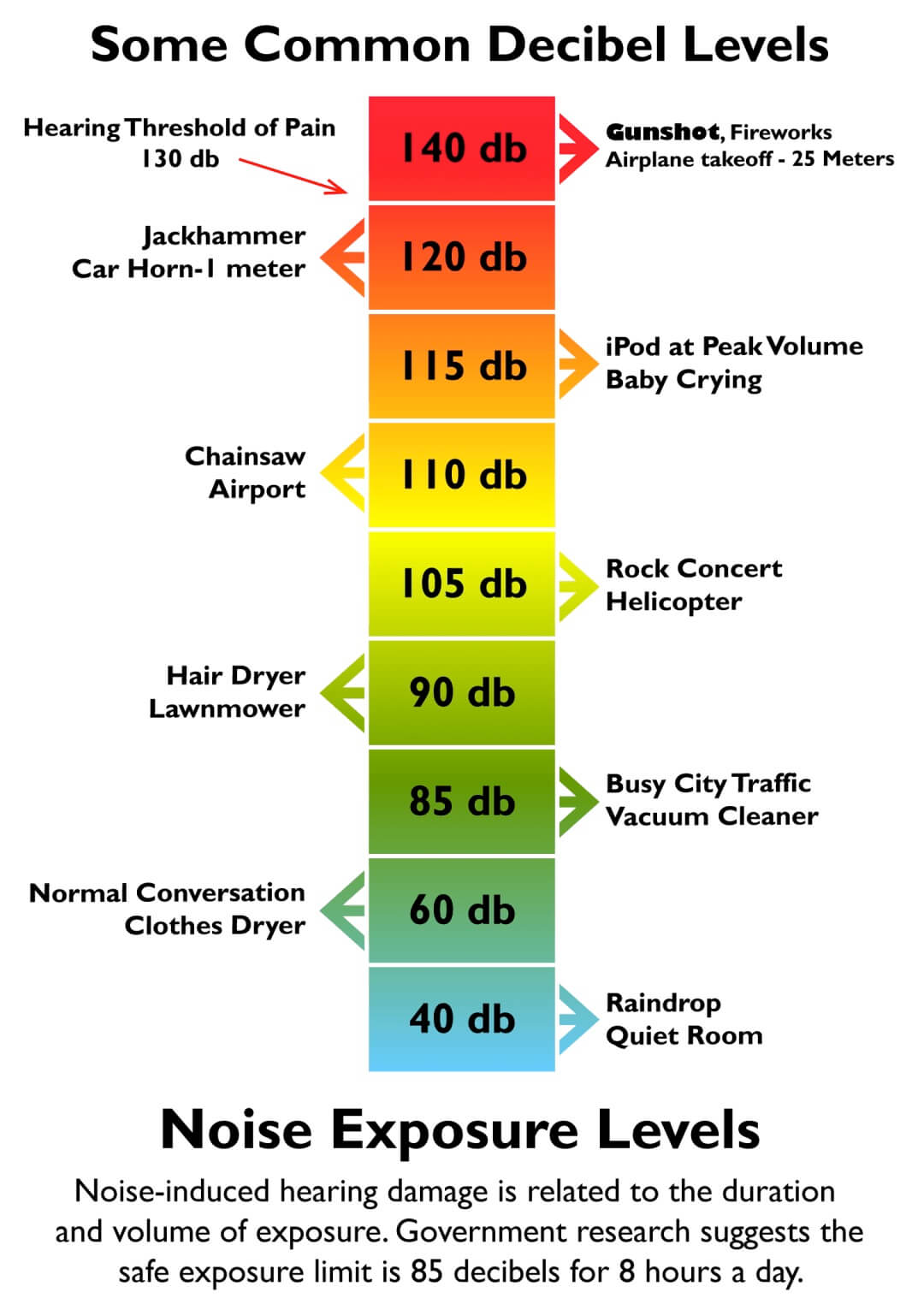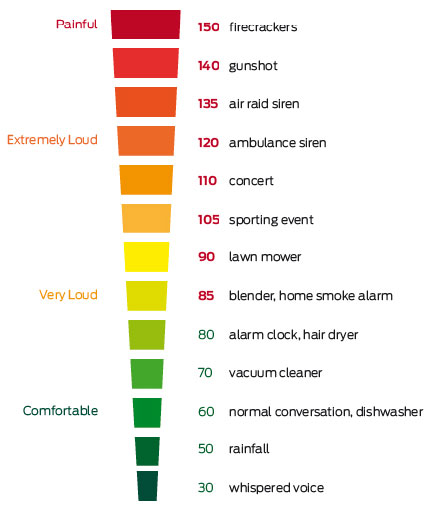

The ear is less sensitive to perceiving the loudness of such sounds because of their short duration. An impulse sound is a sound that is less than one second in duration. Impulse sounds, on the other hand, pose a challenge in evaluating loudness. For instance, a 50 Hz tone must be 15 dB higher than a 1 kHz tone at a level of 70 dB to have the same subjective loudness. The equal loudness contours in the figure show the sound pressure level required at any frequency to give the same apparent loudness as a 1 kHz tone. Furthermore, this difference in frequency sensitivity is more pronounced at low sound pressure levels than at high ones. This means that the subjective loudness of a sound is not solely determined by its sound pressure level but also by other complex factors. The human ear’s sensitivity to different frequencies is not equal, with the most sensitive range being between 2 kHz and 5 kHz. A sound pressure level of 100 dB is perceived as very noisy, while anything greater than 120 dB is intolerable. A range of 0 to 40 dB is considered quiet to very quiet, while 60 to 80 dB is generally described as noisy. Sound pressure level (SPL) can be described subjectively based on the decibel (dB) scale. The smallest change humans can hear is about 3 dB. Although doubling the sound pressure corresponds to an increase of 6 dB, it takes about 10 dB of increase for the sound to subjectively appear twice as loud. In the decibel scale, audible sounds range from 0 dB, the threshold of hearing, to over 130 dB, the threshold of pain. Doubling the sound pressure in pascals increases the sound pressure level in decibels by 6 dB. This formula expresses the sound pressure level as a logarithmic function of the ratio of the sound pressure to the reference pressure.

Using the formula Lp=10lg (p/p 0) 2, where p is the sound pressure in pascals, and p 0 is the reference sound pressure of 20 μPa. For example, 200 µPa corresponds to 20 dB (re 20 µPa), while 2000 µPa corresponds to 40 dB.īecause of large sound pressure amplitude changes, the sound pressure level in decibels (Lp) is used rather than Pascal units. When measuring sound pressure in Pa, adding 20 dB to the dB level is equivalent to multiplying the sound pressure by 10. At an SPL of 120 dB, the sound is considered to be at the threshold of pain, and any sound louder than this can cause permanent hearing loss. This is much louder than the threshold of hearing, but still relatively quiet.Īs the sound pressure increases, so does the SPL. Taking the logarithm (base 10) of this ratio gives you 1, and multiplying by 20 gives you an SPL of 20 dB. On the other hand, if the sound pressure is 200 µPa, then the ratio of the RMS sound pressure to the reference level of sound pressure is 200/20 = 10.

This is the lowest possible SPL, which corresponds to the threshold of hearing. Taking the logarithm (base 10) of this ratio gives you 0, and multiplying by 20 gives you an SPL of 0 dB. This gives you the SPL in decibels (dB).įor example, if the sound pressure is 20 µPa, then the ratio of the RMS sound pressure to the reference level of sound pressure is 20/20 = 1. To calculate SPL, you take the ratio of the sound pressure to the reference level of sound pressure and then take the logarithm (base 10) of that ratio, and then multiply by 20.


 0 kommentar(er)
0 kommentar(er)
